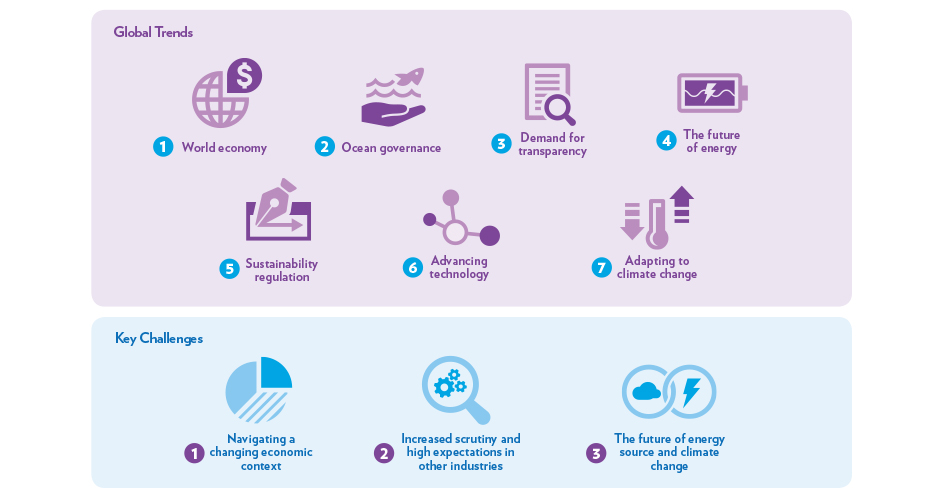 07th August 2020
07th August 2020
The sheer scale of building a sustainable supply chain, in terms of geography, involvement of governments, industry associations and companies is a mammoth task – which has been broken down into different umbrella groups within shipping, rail, logistics and ports.
As shipping tries to build a more sustainable future, it is the rail freight sector that has been ‘banging the drum’ for years to convince shippers to move cargo off the road on to rail.
Rail has, in many areas, provided a blueprint for other modes of transport looking to become more sustainable. Growing freight transport volumes have led to ever more congested roads. The European Commission is aiming to shift 30 per cent of road freight, transported more than 300 kms in Europe, to either rail or water by 2030 and for that figure to increase to 50 percent by 2050.
Intermodal rail-road transport is also an alternative to reduce truck emissions and help make the transport system more sustainable.
Increasing electrification of rail networks around the world has been a major driver in reducing emissions from diesel burning locomotives. There has also been an increase in on-terminal rail connections being built around the world to reduce the number of trucks transiting terminals on a daily basis, significantly reducing emissions in local communities and improving sustainability.
Canadian National (CN) is at the forefront of the railroad sustainability drive in North America and has reduced locomotive emission intensity by 39 per cent and avoided 45 million tons of carbon emission over the last 25 years.
The next goal for CN is to reduce the network’s carbon intensity by 29 per cent by 2030 compared to 2015 levels. In support of keeping the global temperature increase below 2 degrees Celsius compared to pre-industrial temperatures, innovation and technology will play an important role. (Source: cn.ca/en/)
While North American and European rail networks move forward with sustainable rail programmes, there have been new developments on the fast-growing China-Europe rail network.
The EU and China are working on a joint study to develop sustainable rail-based transport corridors between Europe and China assessing the current situation of railway corridors between the two regions and to analyse potential problems on the routes, in terms of hard and soft connectivity.
Both sides are aiming to identify the missing links and bottlenecks to find solutions to improve the capacity of the hubs and upgrade the quality of transport services.
The results will form the basis for further agreements under the EU-China Connectivity Platform, which promotes synergies between *TEN-T and One Belt, One Road initiative.
[* The TEN-T (Trans-European Transport Network) policy addresses the implementation and development of a Europe-wide network of railway lines, roads, inland waterways, maritime shipping routes, ports, airports and railroad terminals.]
The World Ports Sustainability Program (WPSP), was established by the International Association of Ports and Harbors (IAPH) which is overseeing 120 projects in 71 ports’ covering 38 countries and five continents.
The WPSP is guided by the 17 UN Sustainable Development Goals aimed at enhancing and coordinating future sustainability efforts of ports worldwide and fostering international cooperation with partners in the supply chain.
IAPH aims to create an on-line portfolio of port sustainability projects that provides a platform to hold debate, discussion and develop ideas for new initiatives.
In order to publicise and promote the performance of the many projects at ports around the world, the IAPH publishes the World Ports Sustainability Report 2020 which highlights the enormous challenges of building a sustainable ports network.
“It is a complex mixture of geopolitical changes, digitalisation and automation, decarbonisation and professional development which will shape the future of the port sector,” said Patrick Verhoeven, Director General of the IAPH.
The WPSP platform has a growing range of ongoing collaborative projects developed with its partners over the past two years. Examples include the Environmental Ship Index, Clean Marine Fuels Working Group, Navigating a Changing Climate initiative and Taskforce Port Call Optimisation.
WPSP Goals
While the ports community pushes forward with its sustainability strategy, shipping is also following a complex road map through the Sustainable Shipping Initiative (SSI). Launched in 2010, SSI provided a comprehensive 30-year plan to deliver a sustainable future for the industry.
7 Global Trends and the 3 challenges that will impact shipping until 2040

(Please visit https://www.ssi2040.org/ for more information.)
Due to the disparate nature of shipping with 60,000 ships, thousands of ports and millions of shippers and freight forwarders it is always going to be a challenge to build one global platform to improve supply chain sustainability.
With this in mind, it is important to note the thousands of projects being undertaken locally by ports, shipping lines and the freight sector all over the world contributes to a more sustainable supply chain.
Moving forward is to harness digital technology to ensure that supply chain partners can collaborate more effectively to maximise sustainability. By sharing ideas and data on projects and initiatives, the shipping sector can move ahead to a more sustainable future.